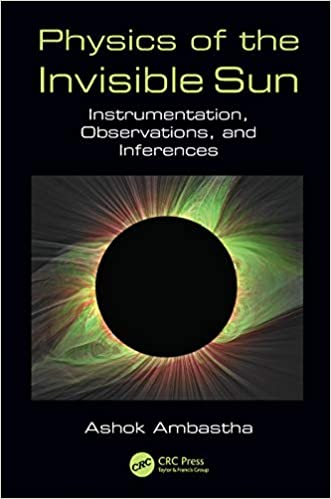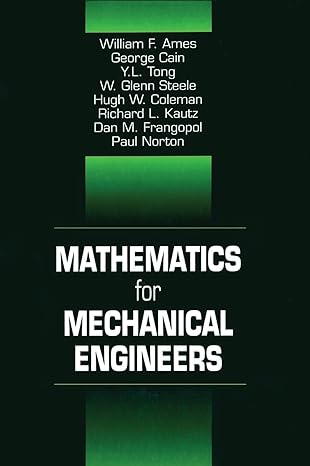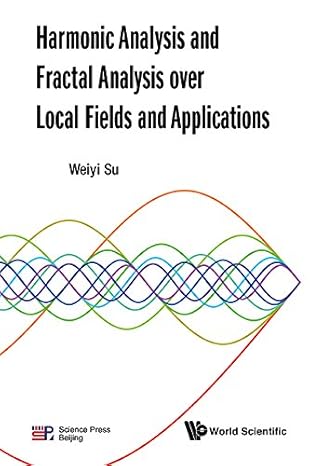Physics of the invisible Sun: Instrumentation, Observations, and Inferences provides a new updated perspectives of the dramatic developments in solar physics mainly after the advent of the space era. It focusses on the instrumentation exploiting the invisible windows of the electromagnetic spectrum for observing the outer, fainter layers of the Sun. It emphasizes on the several technical and observational challenges and proceeds to discuss the discoveries related to energetic phenomena occurring in the transition region and corona.
The book begins with giving a brief glimpse of the historical developments during the pre-, and post-telescopic periods of visible and spectroscopic techniques, ground-based optical and radio observing sites. Various types of telescopes and back-end instrumentation are presented based on photometry, spectroscopy, and polarimetry using the Zeeman and Hanle effects for measurement of magnetic fields, and Doppler effect for radial velocity measurements.
The book discusses theoretical and observational inferences based on detection of solar neutrinos, and helioseismology as the probes of the hidden solar interior, and tests of solar standard models. The characteristic properties and observational signatures of global solar p- and g-oscillations modes, developments in local helioseismology and asteroseismology are discussed. The role of the solar magnetic field and differential rotation in the activity and magnetic cycles, prediction methodologies, and dynamo models are described.
Observing the Sun in IR at the longer, and the UV, EUV, XUV, X-rays, and gamma-rays at the shorter wavelengths are covered in detail. Observational challenges at each of these wavelengths are presented followed by the instrumentation for detection and imaging that have resulted in enhancing the understanding of various solar transient phenomena, such as, flares and CMEs.
The outer most corona is described as a dynamic, expanding component of the Sun from the theoretical and observational perspectives of the solar wind. It then discusses the topics of the Interplanetary magnetic field, slow and fast solar wind, interaction with magnetised and non-magnetised objects of the solar system, the space weather and the physics of the heliosphere. The chapter on the future directions in solar physics presents a brief overview of the new major facilities in various observing windows, and the future possibilities of observing the Sun from ground and vantage locations in space.
Features:
Systematic overview of the developments in instrumentation, observational challenges and inferences derived from ground-based and space-borne solar projects.
Advances in the understanding about the solar interior from neutrinos and helioseismology.
Recent research results and future directions from ground- and space-based observations.
This book may serve as a reference book for scientific researchers interested in multi-wavelength instrumentation and observational aspects of solar physics. It may also be used as a textbook for a graduate-level course.
چکیده فارسی
فیزیک خورشید نامرئی: ابزار دقیق، مشاهدات و استنباط ها دیدگاه های به روز شده جدیدی از تحولات چشمگیر در فیزیک خورشیدی عمدتاً پس از ظهور عصر فضا ارائه می دهد. تمرکز آن بر ابزاری است که از پنجره های نامرئی طیف الکترومغناطیسی برای مشاهده لایه های بیرونی و کم نور خورشید بهره می برد. این مقاله بر چندین چالش فنی و رصدی تأکید میکند و به بحث درباره اکتشافات مربوط به پدیدههای پرانرژی که در منطقه گذار و کرونا رخ میدهند، میپردازد.
این کتاب با ارائه نگاهی اجمالی به تحولات تاریخی در دورههای پیش و پس از تلسکوپ تکنیکهای مرئی و طیفسنجی، مکانهای رصد نوری و رادیویی زمینی آغاز میشود. انواع مختلفی از تلسکوپها و ابزار دقیق بر اساس فتومتری، طیفسنجی و پلاریمتری با استفاده از اثرات زیمن و هانل برای اندازهگیری میدانهای مغناطیسی و اثر داپلر برای اندازهگیری سرعت شعاعی ارائه شدهاند.
این کتاب استنتاج های نظری و مشاهداتی مبتنی بر تشخیص نوترینوهای خورشیدی، و هلیوزیسم شناسی به عنوان کاوشگرهای داخلی پنهان خورشیدی، و آزمایش های مدل های استاندارد خورشیدی را مورد بحث قرار می دهد. ویژگیهای مشخصه و نشانههای رصدی حالتهای نوسانات p- و g خورشیدی جهانی، تحولات در هلیوزیسمشناسی محلی و اختر لرزهشناسی مورد بحث قرار میگیرند. نقش میدان مغناطیسی خورشیدی و چرخش دیفرانسیل در فعالیت و چرخه های مغناطیسی، روش های پیش بینی و مدل های دینام شرح داده شده است.
مشاهده خورشید در مادون قرمز در طولانیتر، و پرتوهای UV، EUV، XUV، اشعه ایکس، و گاما در طول موجهای کوتاهتر با جزئیات پوشش داده شدهاند. چالشهای رصدی در هر یک از این طولموجها به دنبال ابزار دقیق برای تشخیص و تصویربرداری ارائه میشوند که منجر به افزایش درک پدیدههای گذرای خورشیدی مختلف، مانند شرارهها و CMEها شده است.
بیرونی ترین تاج به عنوان یک جزء پویا و در حال انبساط خورشید از دیدگاه نظری و رصدی باد خورشیدی توصیف می شود. سپس موضوعات میدان مغناطیسی بین سیاره ای، باد خورشیدی آهسته و سریع، برهم کنش با اجرام مغناطیسی و غیر مغناطیسی منظومه شمسی، آب و هوای فضا و فیزیک هلیوسفر را مورد بحث قرار می دهد. فصل مربوط به جهات آینده در فیزیک خورشیدی مروری کوتاه بر تاسیسات اصلی جدید در پنجرههای رصدی مختلف، و احتمالات آینده رصد خورشید از زمین و مکانهای برتر در فضا را ارائه میکند.
ویژگی ها:
نمای کلی سیستماتیک پیشرفتها در ابزار دقیق، چالشهای رصدی و استنباطهای حاصل از پروژههای خورشیدی زمینی و فضایی.
پیشرفت در درک فضای داخلی خورشید از نوترینوها و هلیوزیسمولوژی.
نتایج تحقیقات اخیر و مسیرهای آینده از مشاهدات زمینی و فضایی.
این کتاب ممکن است به عنوان یک کتاب مرجع برای محققان علمی علاقه مند به ابزار دقیق چند طول موجی و جنبه های رصدی فیزیک خورشیدی باشد. همچنین ممکن است به عنوان یک کتاب درسی برای دوره های تحصیلات تکمیلی استفاده شود.
ادامه ...
بستن ...







![[Soultion Manual] Statistics for Management and Economics (11th Edition) - Word [Soultion Manual] Statistics for Management and Economics (11th Edition) - Word](https://dl.libsan.ir/images/1/12/61JGRNKwfUL._SY466__66fd1fc169714.jpg)


